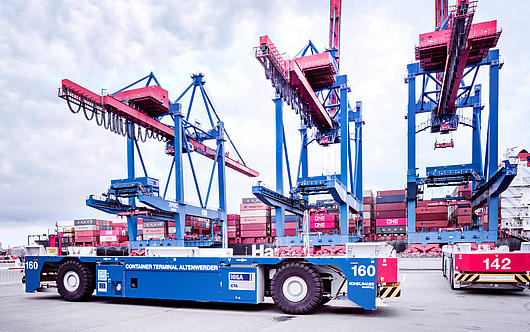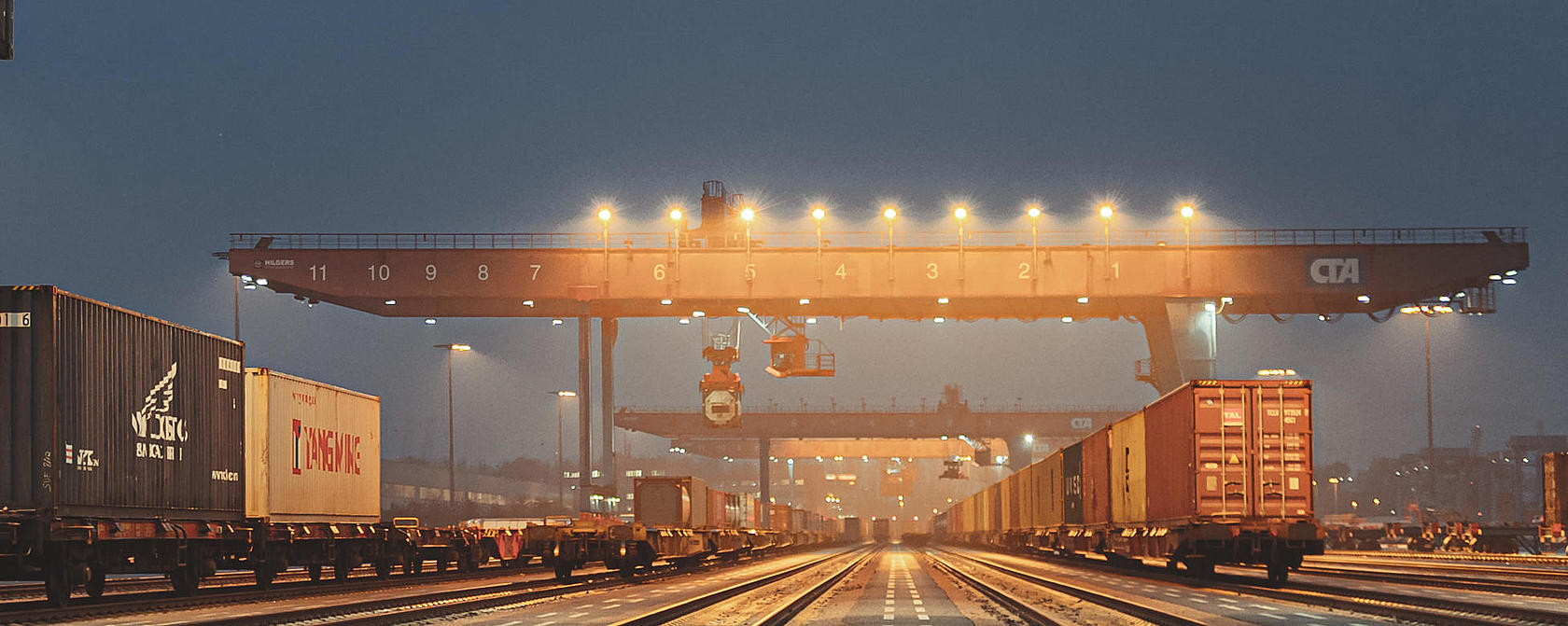
At the rail terminal of HHLA Container Terminal Altenwerder (CTA), rail gantry crane 04 reaches beyond all nine of the busy platforms. Its 500 tonnes of hefty technology moves into position over the half-empty train beneath. A steel box weighing several tonnes hangs under the rotating trolley and must be placed precisely onto a container wagon. The castings at the corners of the container have to lock into the four matching pins of the railcar.
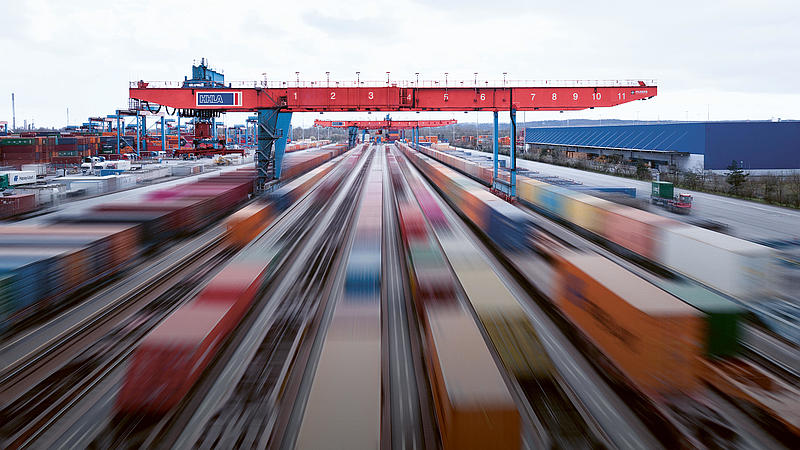
Highest degree of automation in the world
When it clangs into position, the container is perfectly situated. There wouldn’t be anything unusual about this if a member of staff were sitting in the cabin of the heavy-duty machine. But this is another stage in the automation of CTA in the Port of Hamburg. At the time of going into operation in June 2002, it was already the most automated facility in the world. The rail gantry crane project represents the next stage in this evolution. Supported by the German Federal Programme for Innovative Port Technologies (Bundesprogramm Innovative Hafentechnologien – IHATEC), developers at CTA want to find a way for human and machine to interact optimally in automated operations.
The facility has been equipped with 30 real-time scanners that can record 26 million points per second in order to recognise people and vehicles. The scanners make 3D scans of the relevant environment while a software programme constantly compares these images to how the space is meant to look. If it identifies an unknown object, it stops the crane. Soon, remote control operators sitting in the CTA office buildings will be able to supervise and control multiple rail gantry cranes. iSAM AG, a globally in-demand automation technology specialist and part of the HHLA Group since 2020, is also involved in the project.
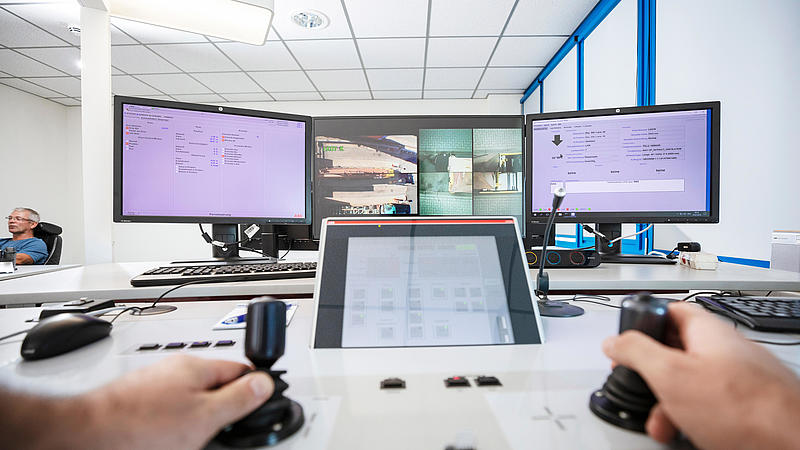
“These kinds of partnerships, like the one with CTA, are exactly what our strategic goal was when we decided to become part of HHLA”, explains Bernd Mann, CEO of iSAM AG. Until now, iSAM has focused on mining equipment and dry bulk terminals. The Mülheim an der Ruhr-based company’s flagship project is Hansaport in Hamburg, the largest ore and coal port in Germany. The iSAM experts have shifted their focus to now include containers in addition to bulk cargo.

Bernd Mann,
“In the port, no one dreams of having to haul heavy bags from A to B. There will still be plenty of work at automated terminals in the future, however, it will tend to be in areas such as management, steering, dispatch and maintenance.”
Bernd Mann, CEO of iSAM AG
According to Mann, their size makes seaports better suited to the scaling of technical solutions than smaller inland terminals for rail transport and inland waterway ships. Automation is only worth it for larger facilities, because the effort necessary to get there is high, he adds. “There are few technological limits for our solutions, but many more economical ones", says the iSAM boss.

Ports are not lagging behind in the global megatrend of automation, as the example of CTA shows. Having said this, other areas of logistics, such as intralogistics, are already further along in terms of implementing this trend. Gigantic high-bay warehouses with standardised processes are easier to automate. Autonomous drones are even taking care of inventory tasks overnight.
The industry giant Amazon has its own division for the development of robotics technologies, known as Global Robotics, which resulted in the first fully automated warehousing robot known as “Proteus”. It can lift and deposit items, drives autonomously and no longer has to be used in a segregated area.
What is the push behind automation?
Hardly anyone is as familiar with the push behind this vast level of automation as Bernd Mann. Even during his university studies, he was already looking at automation technology. He then started at iSAM in 1993 and has been the member of the Executive Board responsible for development and technology since 2002, taking over the chairman position in 2020. He is aware of lots of reasons for the progressive automation. For example, the strain on the large machines is gentler when than when a human operates it. This means the equipment, which is usually very expensive, lasts for longer, is continuously available and dependable and can be integrated more easily into complex logistics processes.
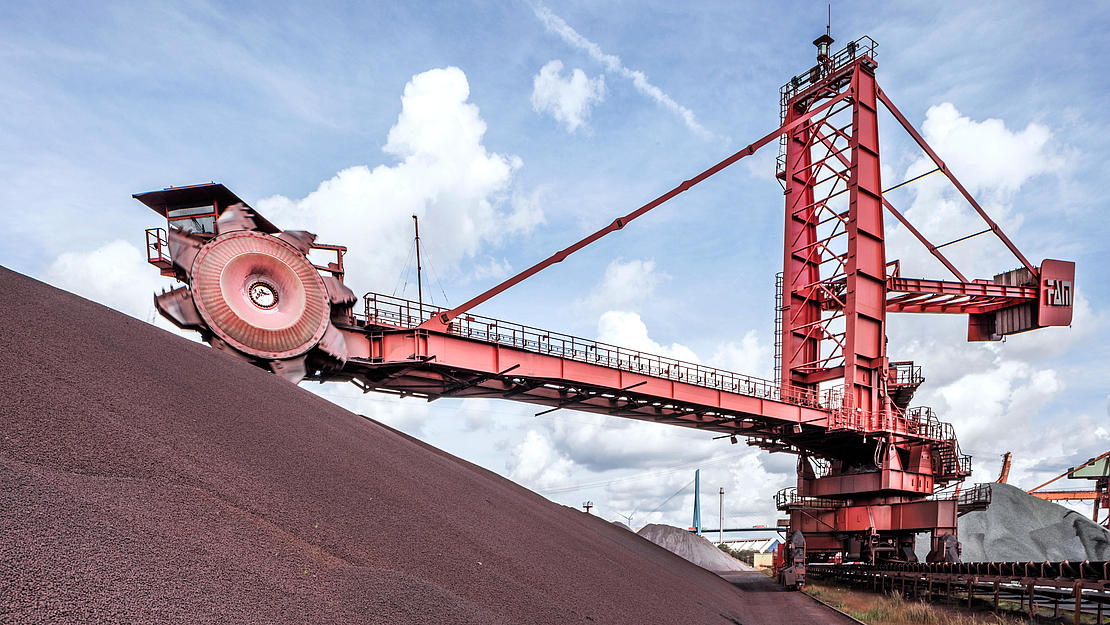
However, Mann’s customers often cite another reason for automating processes: the tangible lack of skilled staff affecting most industries. This doesn’t just apply to Europe, but also to Australia, where many mining companies have set up remote operation centres. This results in entirely new opportunities, when workers are sought for very unpopular areas. The often rather remote mining operations can be largely managed from a distance.

Specialists for difficult cases
A masterpiece of automation in the Port of Hamburg: the Hansaport bulk terminal
“They employ hundreds of people who now don’t have to commute. This is a huge advantage for their families and for the environment”, says Mann. As a positive spin-off effect, this also results in improved working conditions for employees. “Younger colleagues in particular prefer to work in an air-conditioned remote operations centre”, the iSAM CEO says. Working at a computer with the option of a quick chat over a coffee from the communal kitchen is much more popular than climbing up a crane in all kinds of weather and spending your shift alone up there.
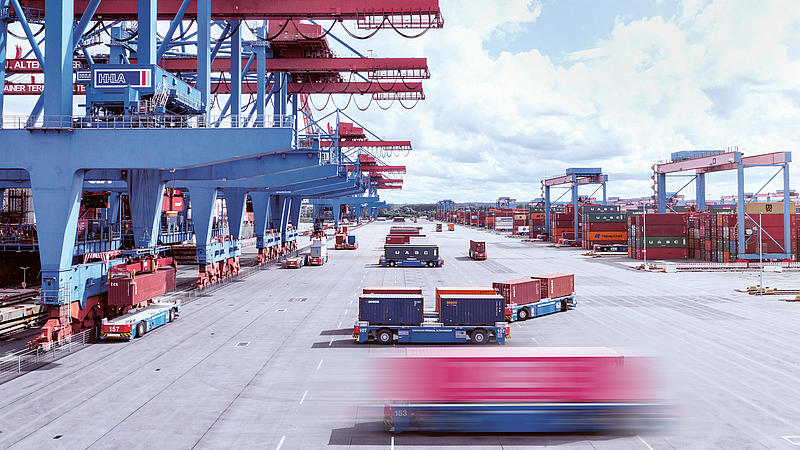
Robots fighting the skilled labour shortage
In economies with high wages, positions in automation are more secure in the long term because they are more productive and therefore more competitive. The iSAM boss acknowledges that fewer employees will be needed in some industries following more automation. But even in intralogistics, where processes are already largely be completed by robots, there is no loss of jobs. Instead, according to the German Institute for Employment Research, the number of employees in this area increased by 26.6 per cent to 972,000 between 2012 and late 2020.

Warehousing and transportation staff are just as desperately sought as almost all logistics specialists. It also results in new opportunities for employees, according to Mann: “In the port, no one dreams of having to haul heavy bags from A to B. There is plenty of work at automated terminals. However, it will tend to be in areas such management, steering, dispatch and maintenance.” HHLA will be investing in qualification and training in these areas in particular to assist this transformation process.
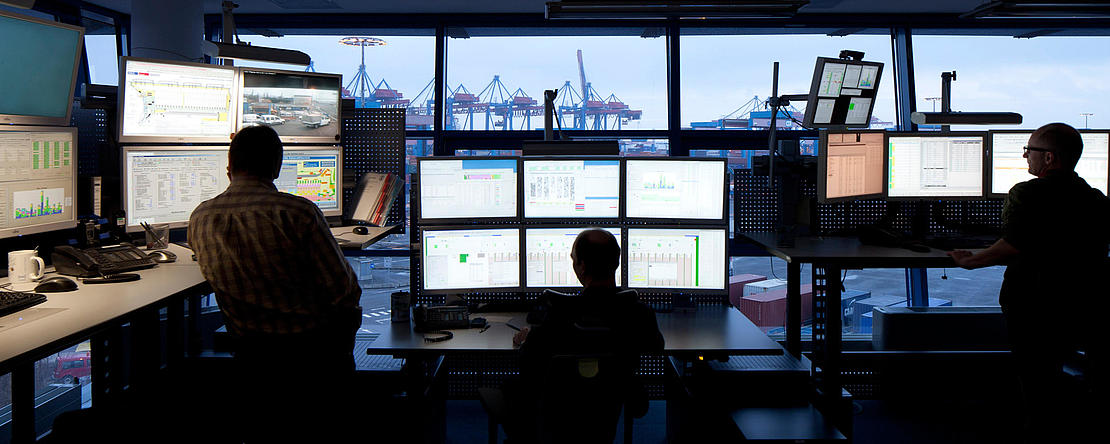
The question remains: what are automation’s limits? Mann has a reassuring answer: “Computers can’t solve problems. People are more efficient in unusual situations. With their experience, they can provide transfer services, i.e. make decisions that lie outside programmable routines.” Computers are not in a position to find creative ways around problems or to decide between two bad solutions, according to Mann’s analysis. In cases like these, people find compromises to complete the discharging of a ship on time, for example. Sometimes 50 containers have to stay behind or must be driven to the next port by truck.
People remain essential, not just for overcoming crises and exceptional circumstances, but primarily for new creations and creative improvements, for planning and prioritisation. And the ever smarter inclusion of machines can help shape a sustainable future. At CTA at the Port of Hamburg, the next challenge is already on the horizon: the container gantry cranes will also be automated bit by bit.
